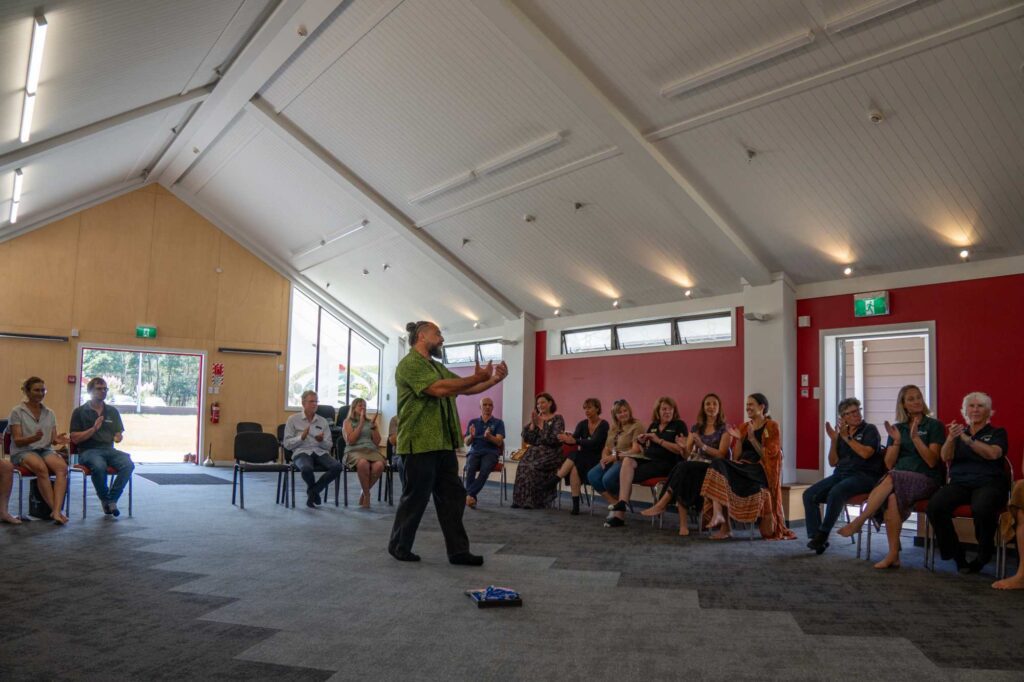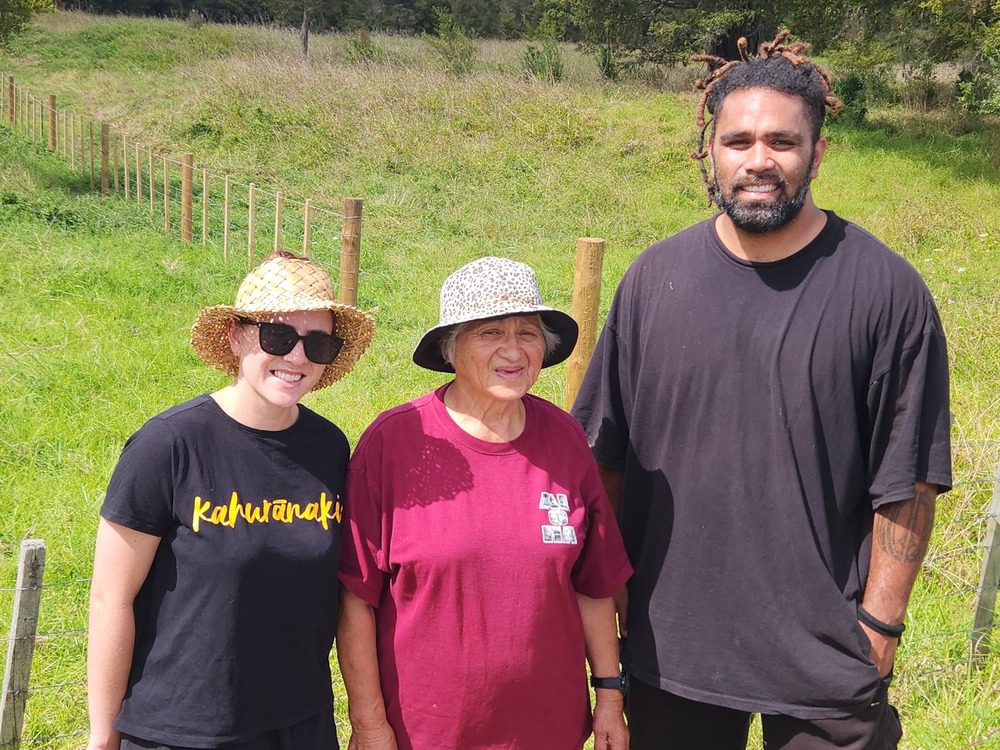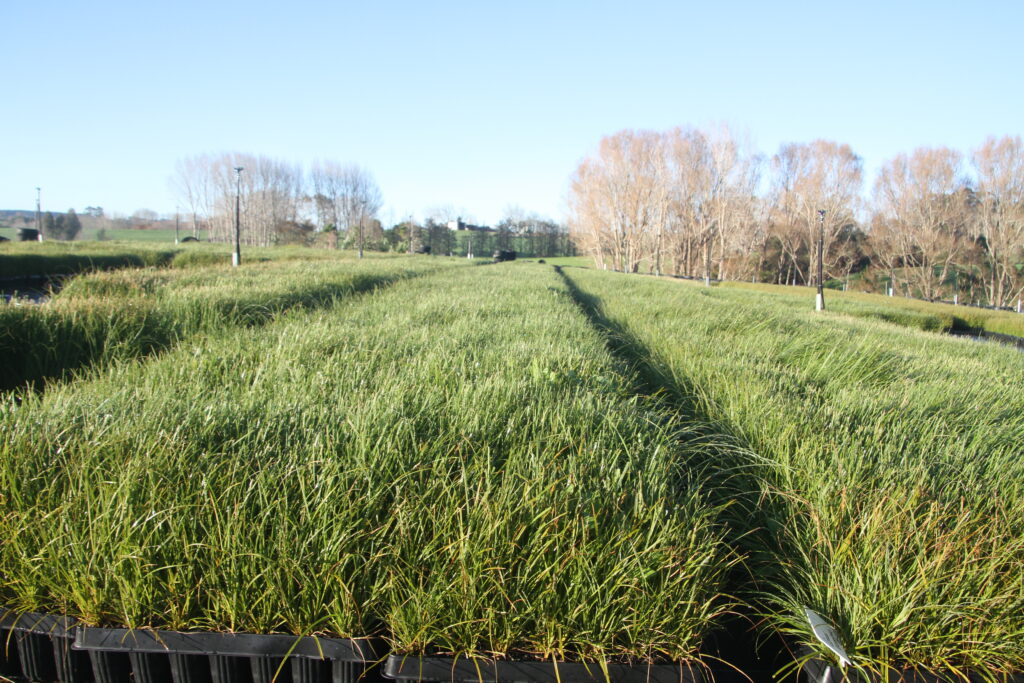

Peter Yardley
Peter Yardley and son Dylan at their regenerating Whakapirau lifestyle block near the shores of the Kaipara Harbour.
For nearly 50 years Peter and Christine Yardley have advocated for better environmental practices in and around the Kaipara Harbour.
From working on farms overlooking the moana, to being on the water looking back up to the surrounding hillsides, Peter could see first-hand that land management practices needed to change dramatically if the Harbour was to survive … and hopefully thrive, once more. The harbour was in such bad shape by the 1990s due to sediment build up, siltation and over-fishing that a return to good health at the time seemed a pipe dream.
“A lot of farmers had moved from farming sheep and opting for beef. People were grazing down to the low tide mark and cattle were all through the waterways so the water quality really declined,” says Peter.
“The commercial fishing quotas changed the fishing landscape and almost overnight we went from about 30 local fishermen to 120 boats working the Kaipara so the fishery stocks suffered due to all those reasons.”
But, led by Iwi through perseverance by a multitude of Kaipara locals, land management practices gradually began to change. Lifestyle block owners with an environmental drive moved into the area and riparian planting became the norm. As more largescale farmers started fencing off waterways and wetlands and boosting native plantations, Peter began to see a gradual, but positive, difference in the Kaipara.
“Farmers, local fishermen and local Iwi really got on board working together when we realised – through working with scientists and our own observations – that we all needed to play a part and change our ways. So many farmers love fishing so it was easy to get them on board. That meant cutting down on nitrogen, not grazing to the low tide mark and keeping cattle off beaches, fencing off and planting waterways, foreshore, swamps and native bush.
He says the timing of the Kaipara Moana Remediation Programme is perfect.
“I had a lot to do with Bill Worsfold and Willie Wright over the years and I shared their vision that to look after the Harbour people needed to be more environmentally minded on the land. The sediment build up in the harbour over the years was chronic and as a result species were disappearing.
“It has been one heck of a journey and a lot us have had to fight hard to get people to change their ways but in recent years I have seen species coming back and the water quality improving. I honestly didn’t think I would see pollution in my lifetime, let alone the reverse. There is still plenty of work to do but we are well on the right track. I will certainly be applying to be part of the KMR programme and doing my bit to revitalise the Kaipara Moana.”
In recent years Peter, Christine and their son Dylan have been gradually protecting parts of their 4ha Whakapirau property.
“When we came here it was an abandoned piece of land with 15 big bulls on it and the pugging of the soil knee deep. The bulls were in the native bush and ponds. Now there are only three steers, we have protected our ponds, fenced off areas of the property and planted over 2000 natives. We will do even more planting and protecting because we have seen the positive difference our efforts in the past few years have made.
“Improving the Kaipara will be a slow procress but we are on the right track and the water quality is really on the mend. KMR is really going to give that a significant boost. It is a great initiative.”
Peter says he founded his estuarine fishing career on Tiaki which he describes as guardianship of the Kaipara Harbour – a harbour he describes as diverse.
“Dylan and I are providing the highest quality of flounder in New Zealand because of our focus on best practice, quality and sustainable fishing practices and I would like to see all fish and shellfish species in the Kaipara at that level as the health of the Kaipara improves. It is a delicate balance but we are smart enough to do it and we will do it.”
“There has been 30 years of voluntary labour go into getting us this far in repairing the Kaipara, now we are seeing our grandchildren coming through as enviro-children so they can continue the work of KMR.”
Latest News


Latest News and Events
Bringing whānau together on the Pīpīwai whenua
